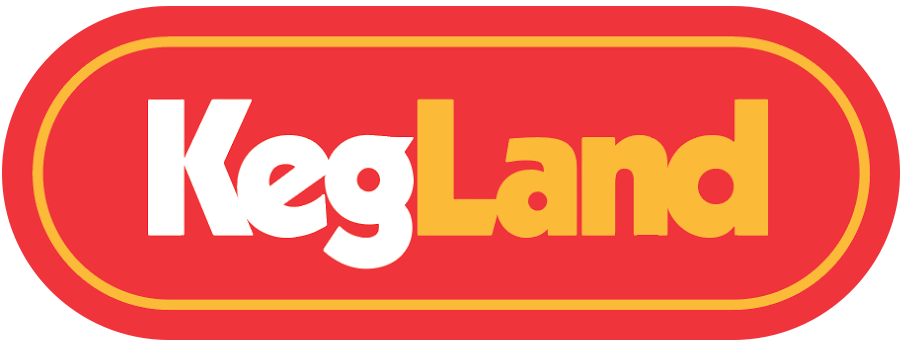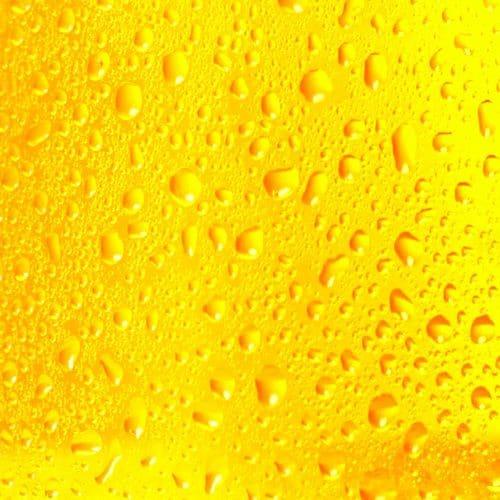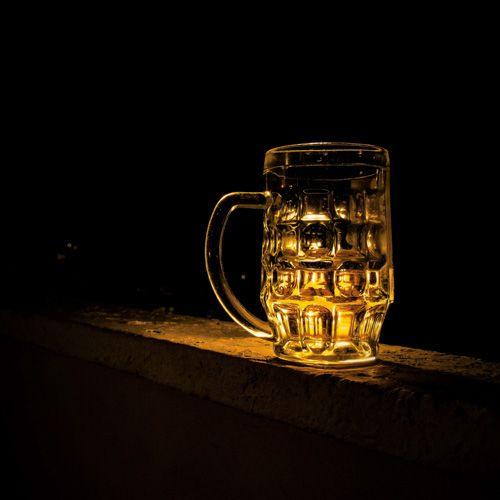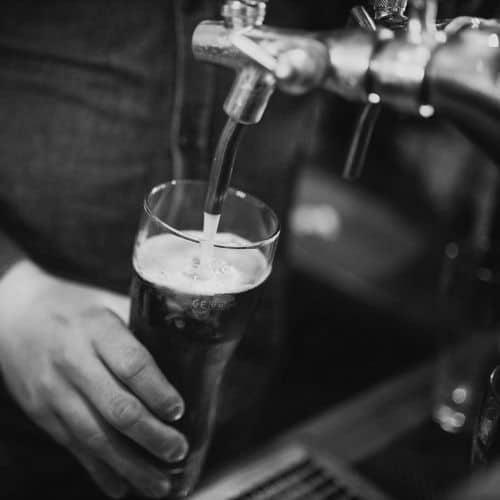One of the many advantages that kegging has over bottling is the ability to force carbonate your beer.
Force carbonation is an often slightly misunderstood term. Let’s clear that up.
Simply put, force carbonation is the term used to describe using CO2 to carbonate your beer. That’s it. If you are not carbonating by adding sugar and having the beer undergo a secondary fermentation, then you are force carbonating.
There are a few things to break down here.
Firstly, the ability to force carbonate opens up quite a few possibilities that don’t really exist for bottling.
You can quite easily dial in different carbonation levels for different beers should you wish for a start.
There is no need to keep the beer warm and wait for secondary fermentation. This is especially useful for hoppy beers, especially modern types of beer such as NEIPAs.
Lastly, you have the ability to carbonate your beer F A S T.
This post, however, is going to explain what is known as ‘set & forget’ carbonation. This is pretty much the most commonly used type of carbonation in the kegging world. It is simple. It is reliable. And it means there is absolutely no chance of over carbonating your beer, which is great, as it is much easier to get CO2 into beer than it is to get it out.
Force Carbonation vs Secondary Fermentation
Now, there is nothing to stop you from adding primary sugar to the beer or to the keg and storing it at room temperature to naturally carbonate. Some people actually believe that you will get a ‘better’ carbonation doing this, in fact – ‘finer’ bubbles is often touted as a reason to naturally carbonate.
This is factually incorrect, however. CO2 is CO2, however it is produced. So force carbonate away!
The Basics of Force Carbonation
Carbonation is largely a function of pressure, temperature, time and surface area. Assuming when kegging that temperature, time and surface area are pretty constant, then the variable will be pressure.
The more pressure, the higher the carbonation level.
Surface area affects the speed at which CO2 dissolves into solution more than anything else – think about the way in which a SodaStream machine works. It carbonates water quickly by forcing it into solution through what is in effect a carbonation stone, thus vastly increasing the active surface area and allowing very speedy carbonation. It is not a factor in the most common methods of force carbonation however.
Most ‘standard’ beers would be carbonated to somewhere between 2.2 and 2.6 volumes of CO2. At higher temperatures, you need higher pressures to achieve the same levels of carbonation, with the converse also applying.
Here is a handy dandy chart that shows the relationship between carbonation levels, temperature and pressure.
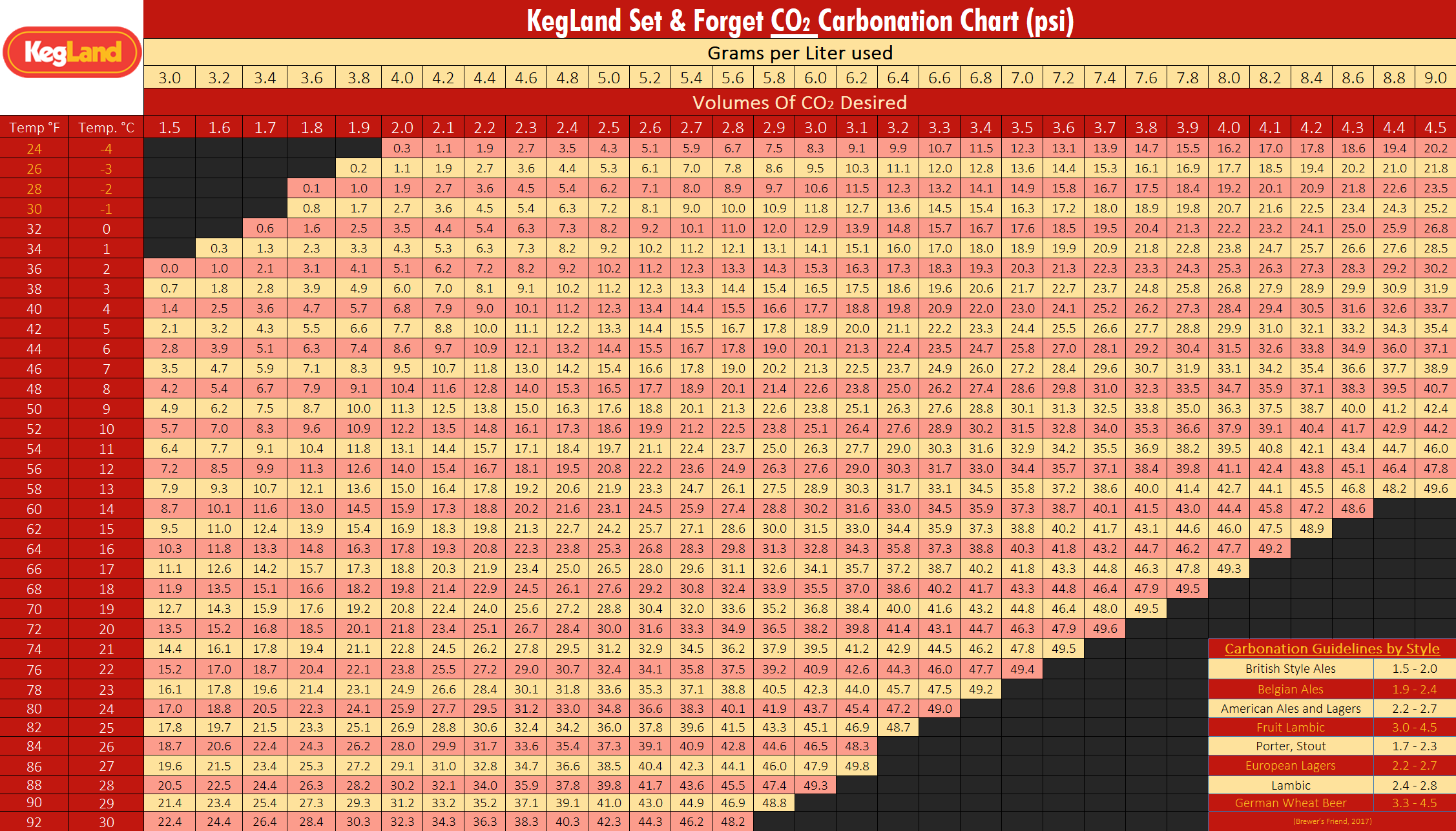
As kegerators store beer at the same temperature, the desired carbonation level will be achieved therefore simply by setting the pressure and waiting. Now, achieving the desired carbonation will take a bit of time. Which leads nicely (finally! I hear you say) to the purpose of this post.
Set & Forget Carbonation.
Set and forget carbonation could not be simpler.
Step 1. Keg your beer. If you have never done this before then please refer to this handy guide.
Step 2: Hook your keg up to the beer and gas lines of your kegerator. Gas lines will be the grey disconnects, and they go on the posts with the small notch on them. The black liquid disconnects go on the plain posts. If you have added pressure to your keg after kegging, it is good practice to purge the headspace by pulling the PRV before hooking them up. This can help avoid unexpected messes or accidentally sending beer down the gas line where it could damage the regulator.
Step 3: Choose your desired carbonation level according to the chart and set your pressure accordingly.
Step 4: Wait for a week or two.
Step 5: Drink delicious, chilled, perfectly carbonated homebrew!
In practical terms, and if you can’t make head nor tail of the chart, simply set your fridge to 2c, and your regulator to 10-12psi. That’s it. You’re done.
The huge advantage of this method is that it is perfectly repeatable and guarantees consistent results. It also completely removes the possibility of accidental over carbonation, which is a possibility with most other force carbonation methods.
The disadvantage is that it takes a bit more time. Some beer styles, of course, will benefit from the extra time, whereas others are better drunk fresher. Remember though – when kegging, you can choose what works best for you and your beer.
Now, if time is of a concern, we can dramatically reduce the amount of time that carbonation takes. Let's head over to this post and discuss the joys of Fast Forced Keg Carbonation
